Where to find dark skies – the best stargazing spots in the UK and beyond
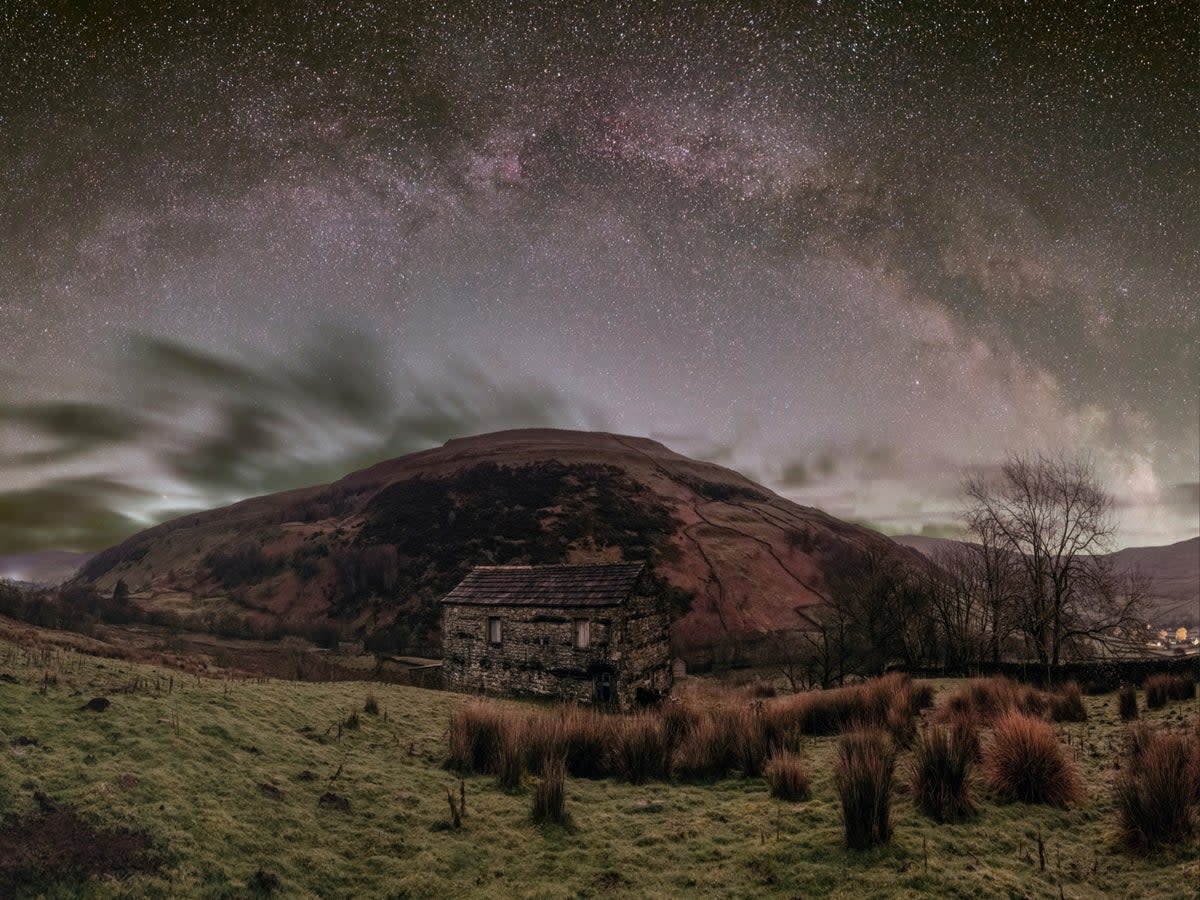
A few summers ago, walking back from the pub at night, I happened to look up and was astonished to see the Milky Way cast clearly across the sky. I was just a couple of miles from my home in Brighton and it turned out that all I’d needed was lucky timing, a clear night – and a chance glance upwards.
But you don’t have to leave these cosmic encounters to chance. Yes, light pollution has dimmed our starry skies. Even rural areas are getting brighter at night – and it’s not just our stargazing that suffers; artificially lit nights are altering the natural behaviours of wildlife and disrupting our own sleep patterns, too.
But there’s good news for amateur astronomers. Dark Sky sites – areas where artificial light pollution is restricted or strongly discouraged – are growing in number. And many are right here in the UK. Just last year, Ynys Enlli (Bardsey Island), off the coast of north Wales, became Europe’s first designated International Dark Sky Sanctuary, with some of the best-preserved night skies in the world.
It looks as if 2024 will be a bumper year for sky-watchers in the Northern Hemisphere, with the predicted solar maximum increasing the chance of northern lights sightings and a total eclipse due to sweep across North America this week.
Here are some of the best places for out-of-this-world stargazing.
UK and Ireland
South Downs, England
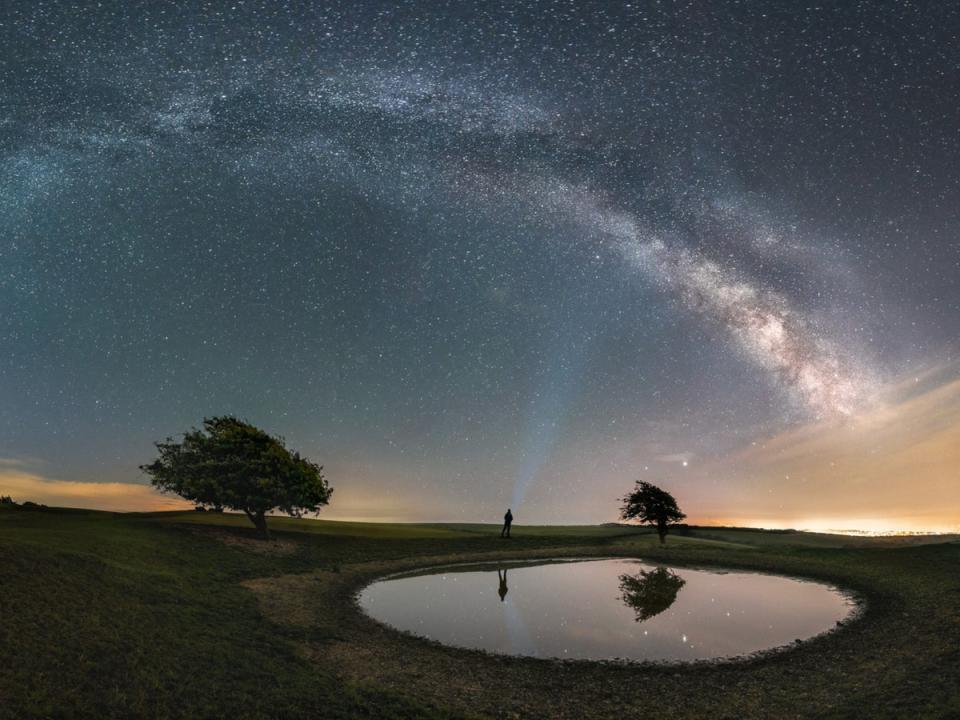
South Downs National Park was crowned an International Dark Sky Reserve in 2016. It’s one of the most accessible in the world, wedged between the south coast and the bright lights of London, with over two million people living within 10km of its boundary. Devil’s Dyke, Butser Hill and Bignor Hill are great viewpoints for horizon-to-horizon views.
Top tip: visit in February and October for the activity-packed Dark Skies Festival.
Hop off the train at: Brighton, Lewes, Arundel.
Nearby: vineyards, beaches, castle towns, South Downs Way.
Yorkshire Dales, England
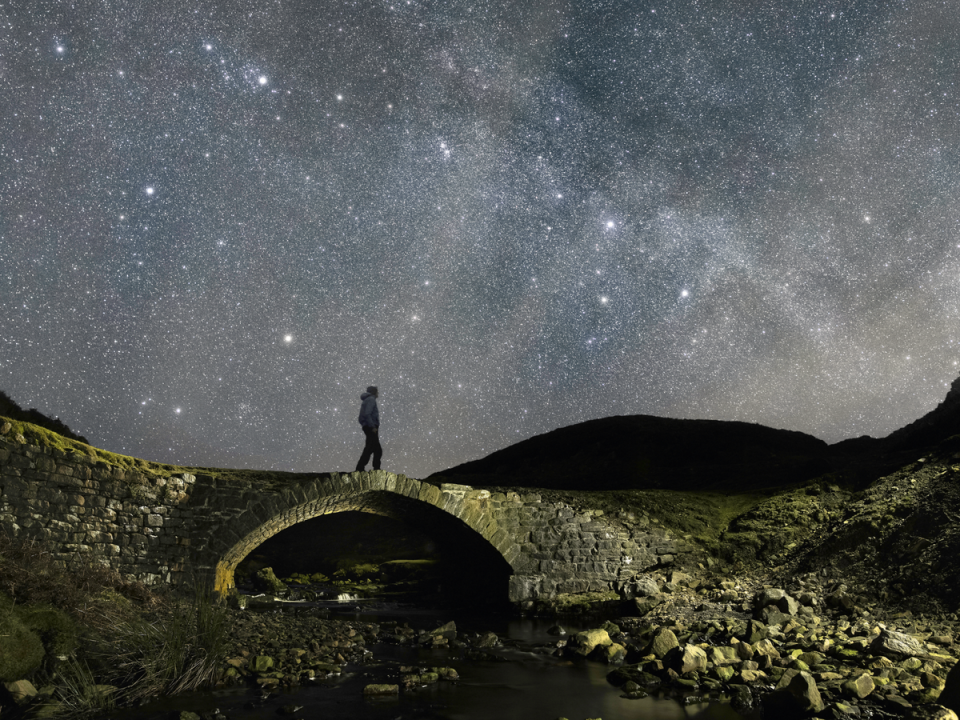
Yorkshire Dales National Park is the largest Dark Sky Reserve in the UK. With such a huge expanse of unpolluted sky, you can see up to 2,000 stars anywhere in the park – even in the villages. However, your best bets are the four Dark Sky Discovery Sites, including the Hawes visitor centre and Tan Hill Inn. This far north there’s even a chance of catching the northern lights.
Top tip: raise a glass of local bitter at the Tan Hill Inn – the highest pub in Britain and a Dark Sky Discovery Site.
Hop off the train at: Skipton, Settle, Horton-in-Ribblesdale, Ribblehead or Garsdale, which are all on the scenic Settle-Carlisle line.
Nearby: Tan Hill Inn, waterfalls, Ribblehead Viaduct, Bolton Abbey.
Eryri (Snowdonia) National Park, Wales
Wales has the highest percentage of land protected for dark skies in the world – and that includes Eryri National Park, declared a Dark Sky Reserve in 2015. Its mountainous crags and crannies are terrible for building light-polluting towns upon, but great for stargazers. Go to Bwlch y Groes – “Pass of the Cross” in Welsh – for spectacular daytime views that transform into incomparable starry skies.
Top tip: keep an eye out for the nocturnal wildlife that flickers through, including owls and bats that rely on the dark to hunt.
Hop off the train at: Betws-y-Coed, Blaenau Ffestiniog, Minffordd.
Nearby: Yr Wyddfa (Snowdon), Portmeirion, National Slate Museum, Harlech Castle, sandy beaches and waterfalls.
Cairngorms, Scotland
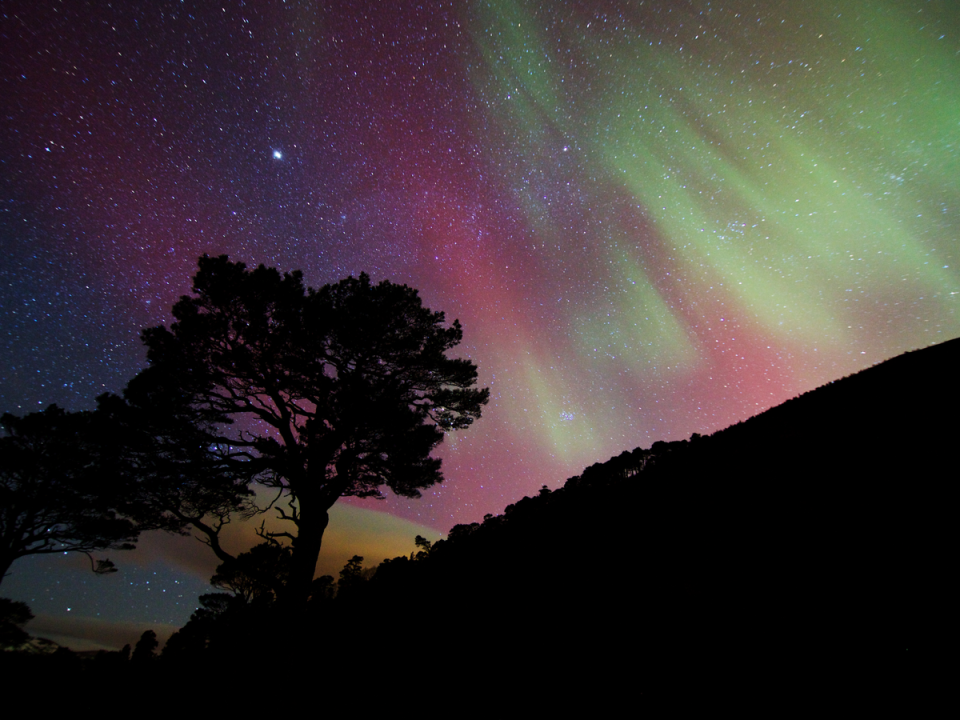
Things are well set up for stargazers in Glenlivet and Tomintoul Dark Sky Park. Accommodation bristles with telescopes and maps, and there’s a schedule of night walks and moongazing sessions. This far north, the northern lights sometimes make a cameo too. You’ll get great night skies wherever you go, but the triangle of Blairfindy Moor, the Carrachs and the Field of Hope are some of the easiest places to reach.
Top tip: download the AuroraWatch UK app to get an alert when the aurora is likely to appear.
Hop off the train at: Aviemore, Carrbridge.
Nearby: Scottish Highlands, Strathspey Railway, camping, Glenlivet Distillery.
County Kerry, Ireland
A Dark Sky Reserve covers much of the Iveragh Peninsula in Kerry. Here, the community-led Skellig Coast Dark Sky Festival kicks off In April with walks and talks covering subjects as wide-ranging as space traffic, astrophotography, marine life and myths. Kerry was the first Dark Sky Reserve awarded Gold Tier in the Northern Hemisphere, so – when the weather behaves – stargazing with the naked eye is as good as it gets.
Top tip: the weather is notoriously changeable here, so keep refreshing the weather forecast.
Hop off the train at: Killarney… and then a long bus ride. Driving is easiest.
Nearby: Ring of Kerry, Skellig Islands, Wild Atlantic Way.
Sperrin Mountains, Northern Ireland
There’s nothing quite like stargazing in the company of a Bronze Age stone circle. Some archaeologists think the Beaghmore Stone Circles were an ancient observatory, with rows of stones and cairns seemingly marking the movements of the sun and moon. But their exact meaning has been lost over the last 5,000 years. Marvel at the mysteries yourself at the OM Dark Sky Park and Observatory, where you can join a guided tour to learn more about the stones and the stars.
Top tip: bring your bike and boots to make the most of Davagh Forest’s trails before the sun sets.
Hop off the train at: Belfast, an hour’s drive away.
Nearby: Davagh Forest, Sperrin Area of Outstanding Natural Beauty.
Best stargazing spots beyond the UK
Iceland
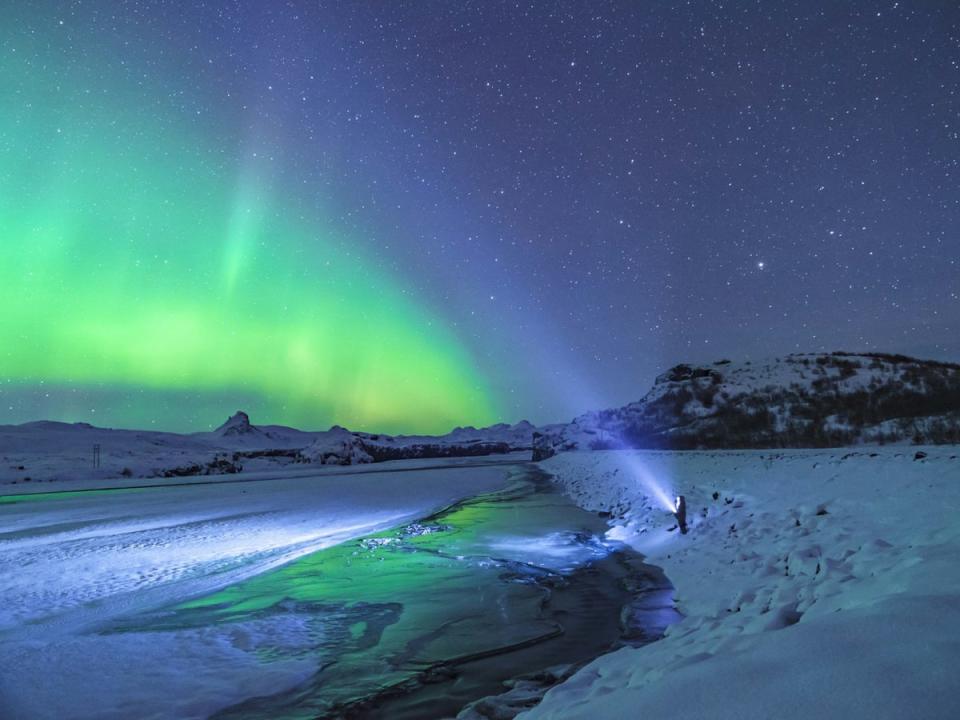
I went to Iceland during a solar maximum, a year when increased solar activity heralds a particularly lively aurora. The northern lights were indeed a wonder – but I was more taken aback by the canopy of stars. Outside Reykjavik, with flat lava fields all around, the sky was so dense with stars that it was impossible to pick out constellations. Plus, stylish aurora cabins and toasty hot springs make stargazing a delight.
Top tip: visit during the spring or autumn equinoxes when aurora sightings are more likely.
Hop off the plane at: Reykjavik.
Nearby: hot springs, whale watching, glacier walks.
Mercantour National Park, France
Astronomers have made a beeline to Mercantour National Park ever since the 19th century. Here, the Calern Plateau Observatory has long housed pioneering observation instruments and it’s still a base for Doctor Who-style research on subjects like time transfer and space geodesy. But you don’t need to be a pro to stargaze here; mountain guides lead night walks through this International Dark Sky Reserve.
Top tip: pop by the Nice Observatory, which comes with great views over the city and the French Riviera below.
Hop off the train at: anywhere on the Roya Valley line, St Dalmas de Tende and Tende. Nice is the nearest airport.
Nearby: Provence, French Riviera, Nice.
Andalucia, Spain
Leave the beach resorts and cities in the rear-view mirror and head for mountainous areas like the Sierra Nevada. Here, hotels like El Geco Verde work with stargazing experts who’ll guide you through the skies. Sierra Morena Starlight Reserve, meanwhile, stretches over 400km through Huelva, Seville, Córdoba and Jaén, where a decades-long exodus of people from rural areas has left behind some of the least polluted skies in the Iberian Peninsula.
Top tip: nights get dark late in summer, so prep for the astronomy with some of Spain’s best tapas first.
Hop off the train or plane at: Malaga, Granada, Almeria, Alicante, Murcia.
Nearby: Alhambra, Seville, Ronda, Sierra Nevada.
Big Bend National Park, USA
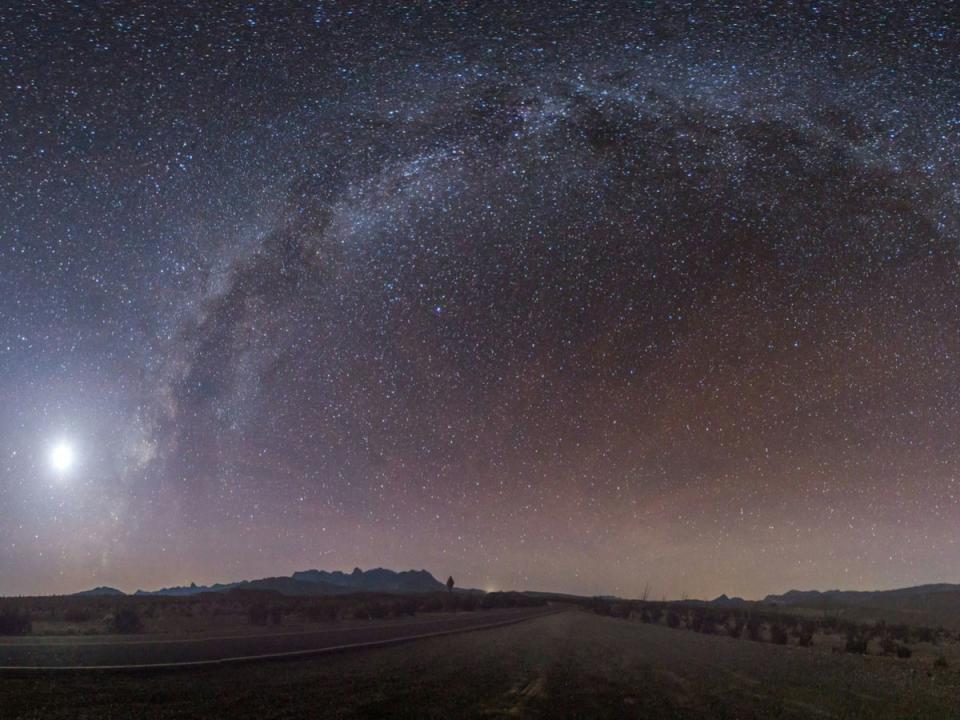
Marvel at the stars where International Dark Sky Week began over 20 years ago – in the USA, thanks to founder and teenage activist Jennifer Barlow. This year, there’s a fitting grand finale. On 8 April, a swathe of North America will experience a solar eclipse.
But eclipse or no eclipse, Greater Big Bend International Dark Sky Reserve is one of the best places to have your eyes on the skies in North America. It’s the biggest Dark Sky Reserve in the world, uniting some of the best stargazing territory on either side of the Rio Grande. McDonald Observatory in Fort Davis is a great spot too, with a schedule of star parties and guided night hikes.
Top tip: this is the desert, so do your research, time your hikes right, and pack lots of water and sun cream. Or even better: go with a local guide.
Hop off the plane at: El Paso, a five-hour drive away. Why not spend a week here and turn it into a road trip?
Nearby: Ross Maxwell Scenic Drive, Santa Elena Canyon.
Tips for stargazing
Check the lunar calendar. Full moons are beautiful but bright; the new moon is best for stargazing.
There’s no need to fork out for a telescope. You’ll see loads with the naked eye and a little more detail with a pair of binoculars. Have a little patience, though – it takes about 10 minutes for your eyes to adjust and widen your scope.
Nights can get chilly when standing still. Pack gloves, coats and hats even in summer.
Dark Sky Reserves are often fought for and run by volunteers. Your fees help preserve them, so don’t be shy about tapping your card on donation points when you can.
Catherine Roberts writes for Responsible Travel.

 Yahoo News
Yahoo News 
